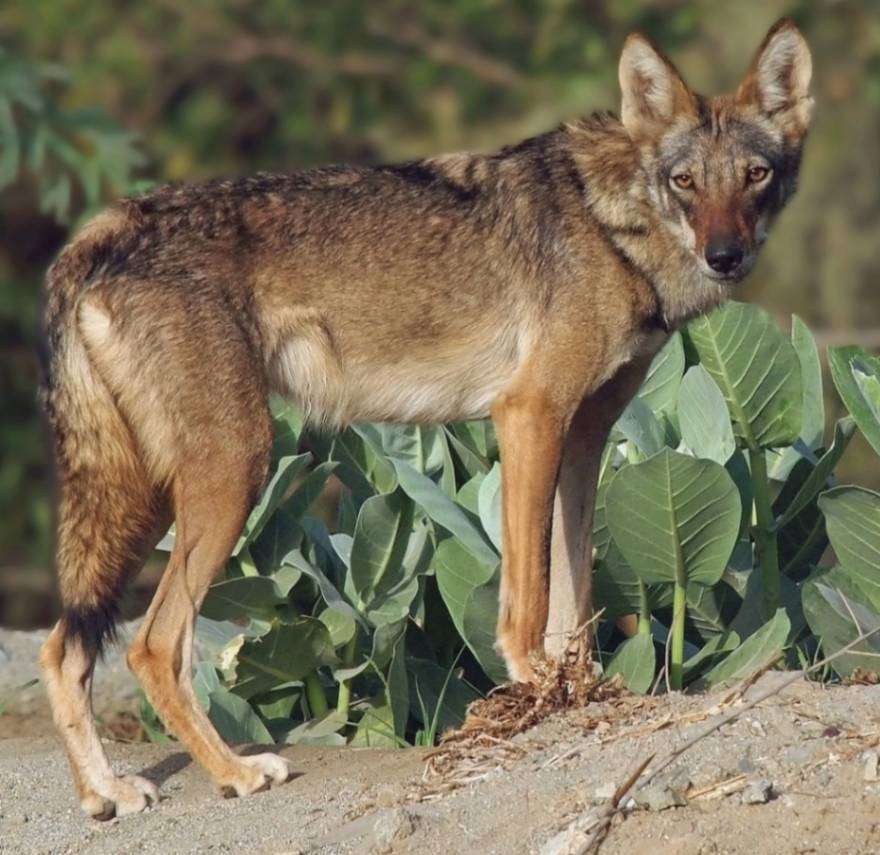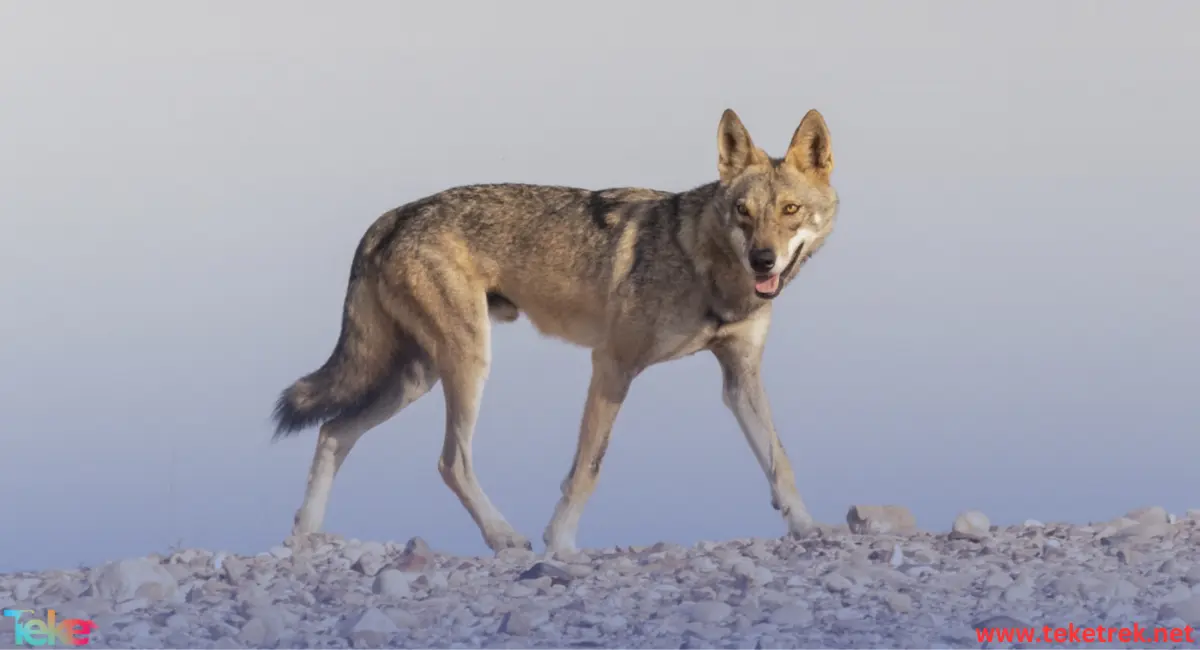The Arabian wolf is the silent fighter in the heart of the Arabian desert, characterized by intelligence, strength, and the ability to adapt to various environments.
Below on the TekeTrek website, we talk more about it. We will mention its characteristics, food, and how it reproduces.

About the Arabian wolf
The Arabian wolf is an eastern wolf, from the phylum Vertebrates, class Mammalia
Order Carnivores, Family Canidae.
Characteristics of the Arabian wolf
The Arabian wolf is the smallest type of gray wolf in Eurasia. It is characterized by the presence of a clear bulge on its upper back that extends from the neck to the end of the tail.
Arabian wolf shape
The Arabian wolf has a set of physical traits:
- It is distinguished by its small size and gray colour.
- Its height reaches approximately 66 cm.
- In addition, it weighs about 18 kg.
- It has large ears compared to its face and body, which helps control its body heat, making it adapted to living in the desert.
- Its body is covered with beige fur with shades of grey. The fur is short and light in the summer, then becomes thicker in the winter.
- His eye color is yellow and sometimes brown.
- It has a long tail, at the end of which is a tuft of black fur.
- The middle toes are fused.
- The arabian wolf has 4 toes on each foot.
- It does not have sweat glands, but rather controls its body temperature through continuous and rapid panting, which helps it evaporate hot air from its lungs.
Food for the Arabian wolf
- Most of the Arabian wolf’s prey are small or medium in size, for example rabbits, dorcas gazelles, foxes, rodents, sparrows, and reptiles.
- The Arabian wolf hunts either singly or in small groups.
- It depends on domestic animals, for example: sheep and goats. Which made farmers shoot it or poison it to protect their livestock, which led to its extinction.
- It also eats wild rabbits, rodents, deer, and ungulates that it finds.
- In addition, it eats carrion and several types of fruits.

Behaviors of the Arabian wolf
The Arabian wolf is an animal famous for its ability to howl, and it also prefers to hunt at night.
- Moreover, it digs burrows in the sand in the summer to protect against high temperatures.
- In addition to being distinguished by his attachment and love for the place in which he lives, he fights for and defends it.
- The Arabian wolf prefers to live and hunt in pairs, or small groups of three to four. But it has been seen more than once in groups of twelve individuals, going out to hunt or protect themselves.
Habitats of the Arabian wolf
- The Arabian wolf is considered one of the most widespread mammals around the world, especially in desert and mountainous areas, gravel plains, arid and semi-arid areas, including: Jordan, Oman, Palestine, Yemen, Saudi Arabia, Kuwait and some places in Egypt.
- But at the present time, its numbers have decreased significantly to the point of extinction due to the fact that it was poisoned by farmers and peasants due to its attack on their livestock.
FAQ
The most common questions about the Arabian wolf:
- Is the Arabian wolf a predator?
Yes, the Arabian wolf is a predator. It feeds on natural prey, including sheep.
- Is the Arabian wolf threatened with extinction?
Yes, the Arabian wolf is threatened with extinction due to the pressures it is exposed to as a result of poaching natural prey.


In short, the Arabian wolf is a predatory carnivore that has adapted to live in desert environments, and is threatened with extinction.
Sources
Wikipedia website






